What to consider when washing weighted blanket?
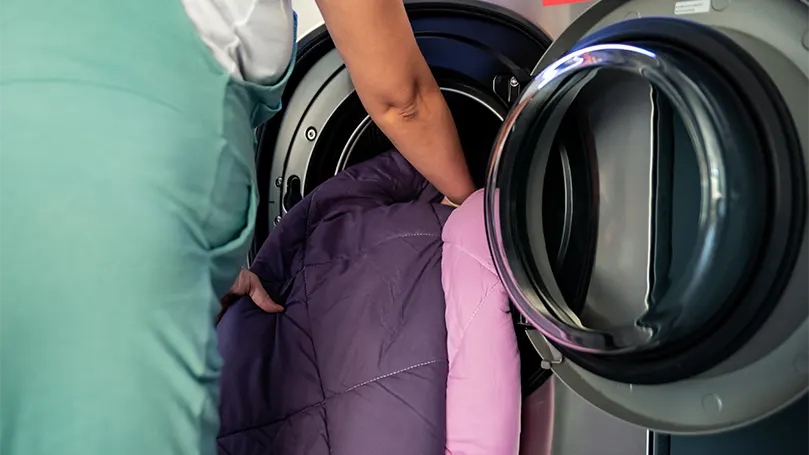
Before you just the entire blanket into a washing machine, you'll have to stop for a second and take a good look at your blankets.
Even though most weighted blankets require a similar kind of care, you will have to pay special attention to a few unique characteristics of your blanket. As you can imagine, cotton blankets and pellet-filled fleece blankets can't be treated equally.
On that note, here's what you'll have to consider when washing weighted blankets.
Filling
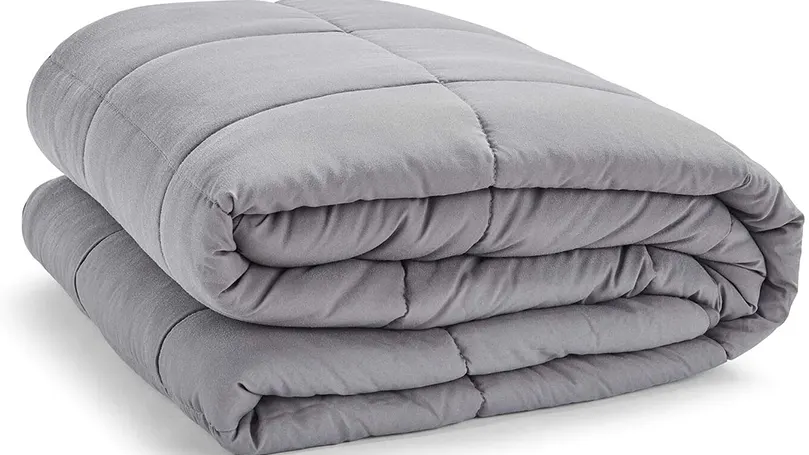
Every weighted blanket will come with its own set of fillings, and based on those fillings, you will or won't be able to wash the entire blanket in the washing machine.
And, for the most part, the same logic applies as with pillows or other bedding products. Filling that can get damaged should not be machine washed (like some organic fillings). However, fillings that can damage the machine should also be avoided (like some of the harded beads).
So, before you do anything, double-check what filling your weighted blanket has and see whether it can be washed at all, and specifically whether it can be machine washed.
The most common weighted blanket fillings are:
- Glass beads
- Steel beads
- Plastic pellets
- Smooth pebbles
- Organic fillings (cotton, corn, beans, rice etc.)
- Sand.
By looking at these fillings, it's evident that some of them have to be washed separately from the cover and that some simply can't get wet. So, before you fill-up the tub or prep the washing machine – think about the fillings.
Cover
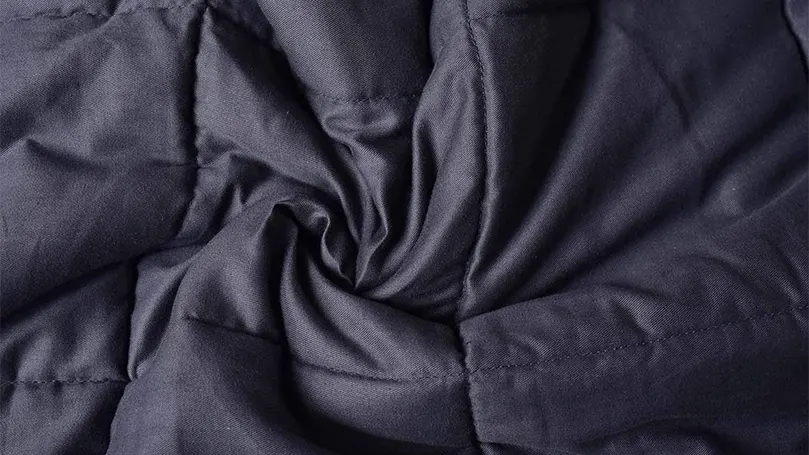
The cover fabric is another thing you need to keep in mind before you prep your weighted blanket for a bath.
Just like fillings, different covers also require different care methods. Some are best washed in warm water, some in the cold. Some can do either cold or warm water. Others require a gentle detergent or don't mind any. Some will tolerate fabric softener, while others won't. You get the gist.
So, check either the care label or find the product specifications online if you can. Also note that some covers will be a blend of different materials. Most of the time, the covers will be machine washable.
However, it's always better to play it safe and double-check as you don't want to damage your nice new covers! The most common weighted blanket cover fabrics are:
- Cotton
- Polyester
- Minky fur
- Fleece
- Linen.
In summation, keep the fabric in mind and wash it accordingly.
Weight
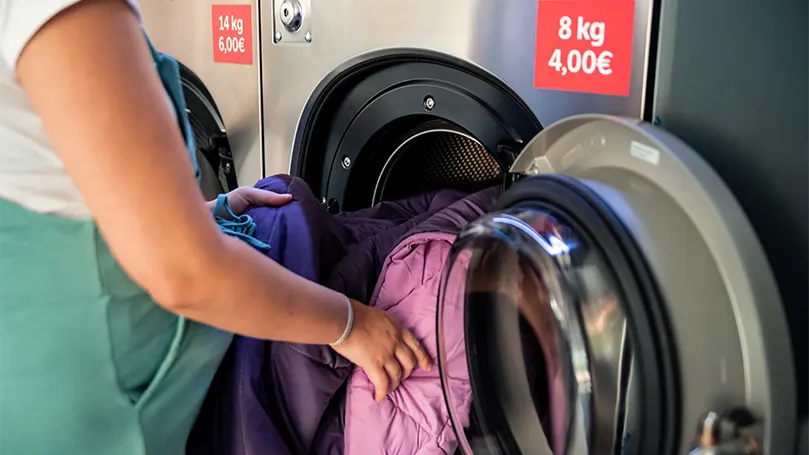
Finally, you'll have to keep in mind how hefty blanket you want to wash is.
As a general rule of thumb, you'll want to have your weighted blankets over 20 pounds (9 kilos) professionally or hand-washed.
The sole reason behind this is that most weighted blankets that heavy won't fit into your regular washing machine.
And even if they did, they could potentially cause some damage to the machine. So, just like in the previous steps, we generally advise to play it safe and not risk damaging any of your stuff.
How do I know how to wash my weighted blanket correctly?
Knowing how to wash your weighted blanket requires a bit more than just looking at the spec sheet.
Every blanket will come with an instruction and care label, which will provide you with all the necessary information about maintenance, washing and drying. We advise you that you never assume how to treat a piece of clothing, bedding, or in this case, a weighted blanket before thoroughly inspecting a care tag.
The most common care instructions you'll find on those labels are listed below.
Wash & dry
Machine wash and dry means you should take your weighted blanket and put it in a washing machine on a slow cycle, use cold or warm water, and use a bleach-free gentle detergent free of any abrasive chemicals.
This also means you should avoid fabric softeners. As for drying – a light or medium dryer setting should do the trick.
Wash & air dry
Machine wash and air dry instructions are pretty similar to the last one – with a single difference.
While machine washing is precisely the same – the drying process is different. In this case, you're air-drying the weighted blanket.
Here's how to properly air-dry a freshly laundered blanket:
- Remove it from the washing machine right away
- Spread it out on a flat surface
- Occasionally shake and fluff to distribute the fillings evenly
- Leave to air dry anywhere from 24 to 48 hours.
Machine wash – only cover
Sometimes, a weighted blanket will come with a removable cover you'll be able to wash separately from the filling.
This is often the case where the fillings require special care, leaving you with the ability to clean the cover on your own.
Generally speaking, you can wash weighted blanket covers in both hot water and cold water, but we'd still advise you to read the manufacturer's instructions. Maybe a gentle cycle seems like a good idea, but you'd get much better results using something else.
Dry cleaning
Oftentimes, a weighted blanket is only safe for spot cleaning or dry cleaning.
In that case, you'll use a gentle stain remover and a soft brush to clean some of the stains you've found – just like you would spot clean a mattress.
Or, if the blanket's “dry-clean only” – you will take it to a professional dry cleaner and have it cleaned there.
Steps for washing weighted blankets under 9 kgs

More often than not, you won't have to pay a commercial washer a visit if you own a weighted blanket that's under 9 kilograms.
These blankets will effortlessly fit your washing machine, or if you don't have one – they'll easily fit in the tub.
So, if you have one of those – here's how you'll wash them.
But do note that not all of these steps will apply to every weighted blanket. There's always some wiggle room and you should always carefully read the care instructions of your particular weighted blanket.
Step 1 – Check the care tag

Before you begin – check the care label!
Reading the care tag will allow you to learn all the information you need. You'll learn whether the blanket's machine-washable or not, whether machine drying is recommended or not, should you dry on the high or low heat setting and can you even tumble dry it, should you use cold or lukewarm water, do you need dryer sheets, which kind of laundry detergent you need, can you use fabric softener, and so much more.
Step 2 – Double-check the weight of a weighted blanket

Before you wash the weighted blanket – double-check its weight.
If the blanket's over 9 kilos (20 pounds), there is a good chance you won't be able to wash it in your washing machine. Instead, you'll need to go to a laundromat and use one of the large washing machines.
If the blanket's under 9 kilos – you may proceed.
Since you don't really have to do much other than press a button or two when you use a washing machine, we'll now tell you how you can hand-wash your weighted blankets.
Step 3 – Add cool water & mild detergent

First up – clean your tub.
After cleaning the tub, soak the weighted blanket in cold water and add a smidge of mild detergent. Leave the blanket submerged for about 15 minutes while gently squeezing it, allowing the soapy water to penetrate the stains and break up any dirt, sweat, or other bodily fluids that have built up over time.
After soaking, lift the blanket and drain the tub. While draining, gently squeeze the excess water out of the blanket.
Then, put the blanket back in and refill the tub with fresh water, and repeat the rinsing process until the only thing leaving the blanket is clean water.
Do not wring!
Step 4 – Dry at low temperature/air dry

After you've washed the blanket – air dry it.
Unless you have a glass bead-filled weighted blanket, you'll want to avoid tumble drying at all costs.
Instead, just lay the blanket flat and leave it out to air dry for up to 48 hours. You may fluff and turn it over every four to five hours to speed up the drying process.
And generally it's better to leave it out for longer as opposed to taking it back inside too quickly. This is because moisture can ruin most bedding products, weighted blankets included.
How to wash a weighted blanket with glass beads?

Unlike other weighted blankets, the ones willed with glass beads don't necessarily need to be washed in cold water.
Instead of using the cold cycle, you may use warm water to wash this type of weighted blanket. However, avoid hot water. Even though glass beads won't melt, it's still recommended you keep the heat low(er).
However, there's another difference.
After washing a weighted blanket filled with class beads – you may tumble dry it on a low heat cycle. This is the only weighted blanket you don't have to air dry.
How often should I wash my weighted blanket?

How often you'll have to wash yours will depend on how often you use it, but many weighted blankets can benefit from a deep clean every three to four months.
On the other hand, if you're a daily user, you'll want to wash a weighted blanket once every two weeks to keep the specific stains away and prevent bodily fluids from being absorbed by the blanket.
Also, avoid ironing. You may iron the covers if they're made from cotton, but as far as the blanket itself goes – don't do it. If the cover's non-removable and you can't stand the wrinkles – use a separate duvet cover to tuck the weighted blanket in.
Conclusion
And now you know how to wash a weighted blanket! But if you have any questions, or know of some washing tips that we've missed out on, be sure to leave them in the comment section.
Spread the word
Related products:

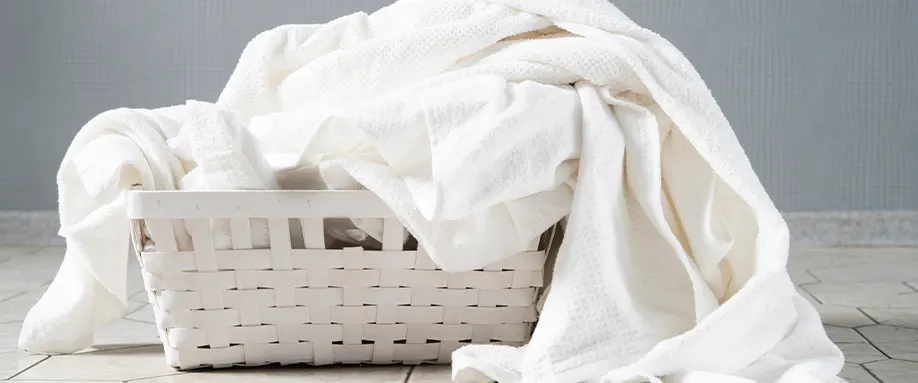













There are no comments yet
"*" indicates required fields